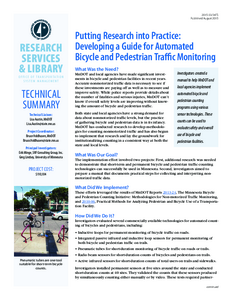Displaying results 1 - 5 of 5
Bicycle and Pedestrian Data Collection Manual - Draft
Date Created
2015
Report Number
2015-33
Description
The Minnesota Bicycle and Pedestrian Counting Initiative: Implementation Study
Date Created
2015
Report Number
2015-34
Description





